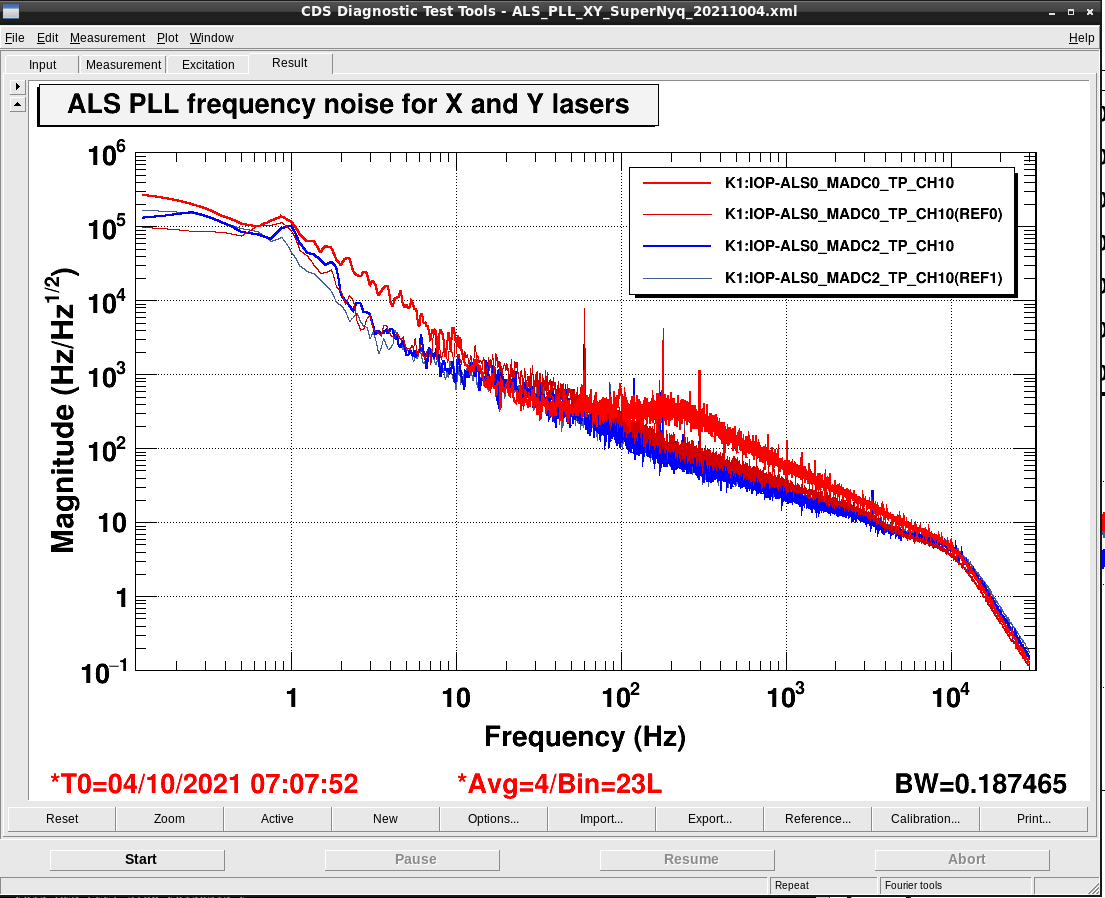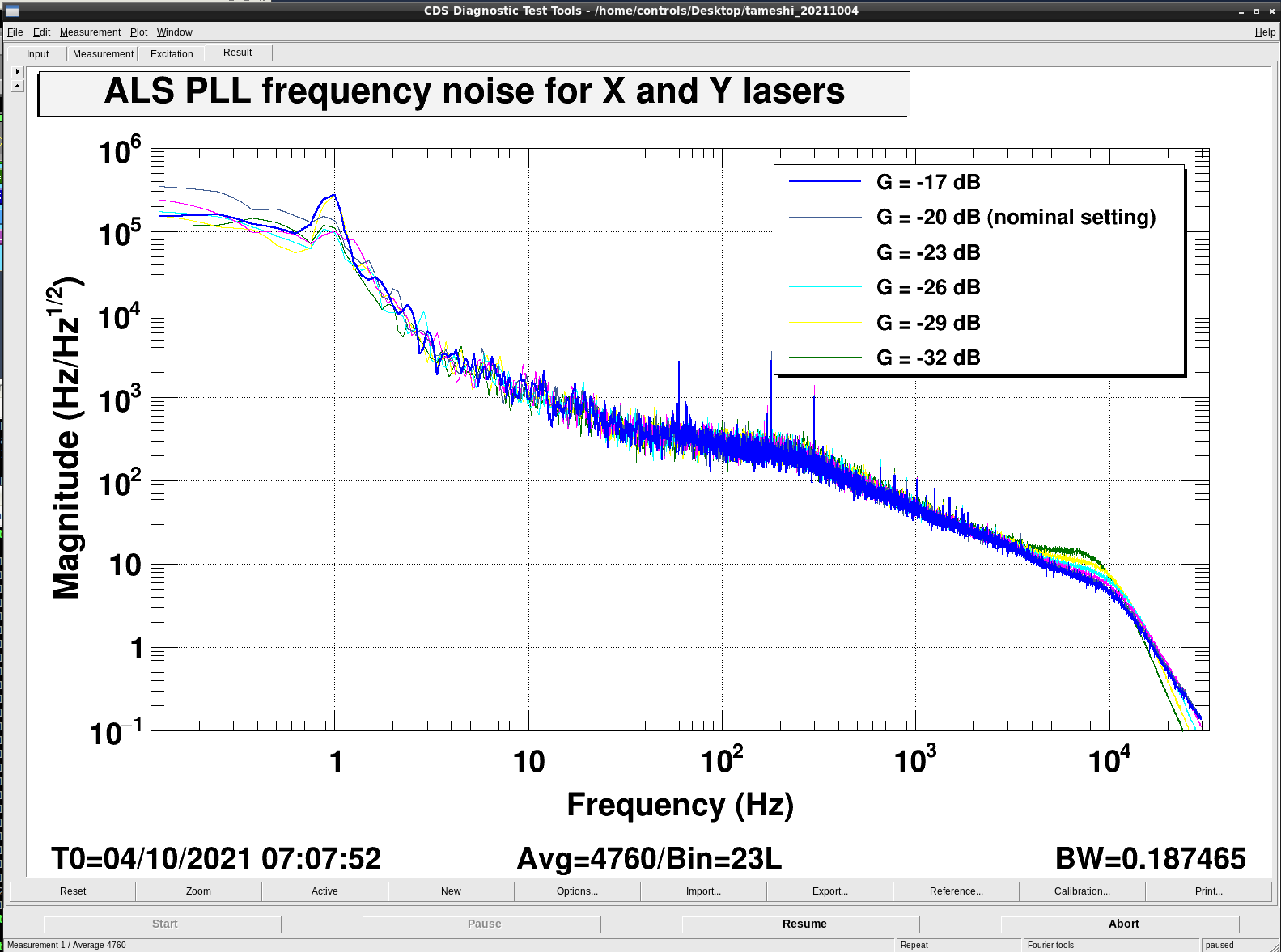The mystery peak started appearing today after the super Nyquist monitor had been set up. However, we see no malicious variations in the spectrum at frequencies above 8 kHz.
The observation
The screenshot below shows how it looked like in the spectrum.

The two red traces are for the PLL X control taken at different times of the day. The dark red is the one I saved before seeing the mystery peak. The bright red is the spectrum when the peak started appearing. As usual, the peak appeared only in the X PLL system. The spectral shape below 100 Hz also changed for some reason. But, looking back in the past data, this is not always the case --- sometimes the spectral components below 100 Hz changes as the peak developed and sometimes not.
Sentivity to the control loop gain
Apparently insensitive. The figure below shows the spectra of PLL X with different gain settings.

In this measurement, the IN1 gain of the common mode board was adjusted in the gain range of [-32, -17 dB] with a 3 dB step. Note that the IN1 gain is usually set to -20 dB. There are some difference in the spectrum above a few kHz, but I believe this is merely the effect of the loop action i.e., G/(1+G) business.
More importantly, the spectral shape remained the same throughout the measurement, indicating that the mystery peak around 250 Hz is actually real in the sense that the PLL control loop is trying to suppress it reagardless of whether it is electronic or optical noise.
This measurement rules out the hypothesis of a gain peaking causing the mystery peak via aliasing.
In addition, I changed the electronic offset of the common mode board to see if it affects the noise spectrum. But it didn't.
What is causing the mystery peak?
Not clear at this point. The crowd in the control room has the following bets.
- Mode hop of the Prometheus laser
- Vibration mode of the laser head
- Some other exotic origin
The first candidate, mode hop, seems unlikely. One of the reasons is the fact that the X laser is running in the stable range where it is at least 1 deg away from the hoppy region in terms of the laser crystal temperature (see Table 2 and Figure 1 of T2112858). Also looking back the past temperature feedback values, the peak occurrence did not show a consistent relation with the temperature values. Also, the fact that the peak appears at an audio frequency is the toughest to explain by the mode hop hypothesis.
The second candidate is something we should examine experimentally. According to the past research (17263), the laser head of the Prometheus for PLL X has a resonant frequency of 250 Hz which is very suspiciously close to the frequency of mystery peak. It is unclear why the vibration mode gets excited, but seems interesting to investigate more.


